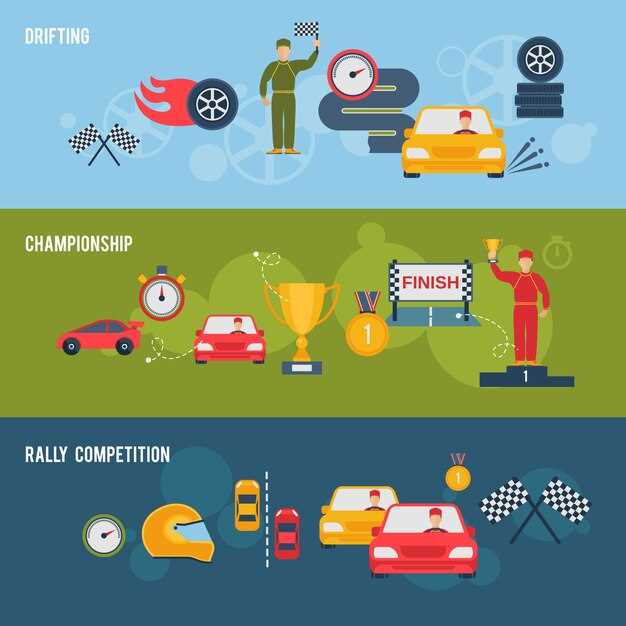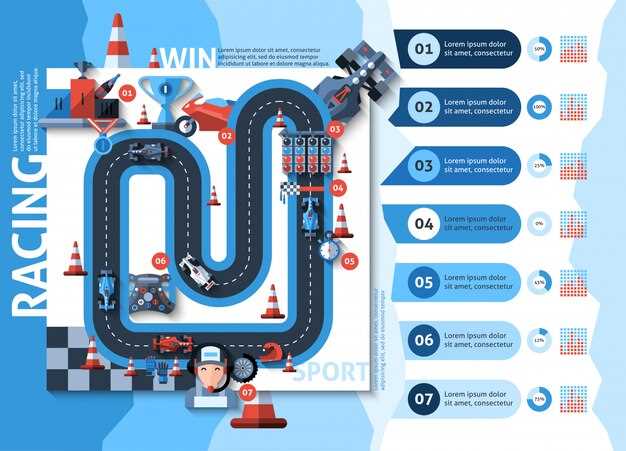
In the competitive world of racing, setting clear goals is crucial for achieving success on the track. Whether you are a seasoned professional or an aspiring amateur, establishing specific objectives can significantly enhance your performance and drive your progression. By identifying what you wish to accomplish in each session, you create a roadmap that guides your efforts and hones your skills.
To maximize your training sessions, it’s important to break down your goals into manageable steps. This not only provides clarity but also facilitates tracking your progression over time. Focus on aspects such as improving lap times, mastering cornering techniques, or enhancing your reaction times. Each small milestone contributes to your overall development and builds the confidence needed to tackle greater challenges on the racetrack.
Moreover, setting measurable and achievable goals allows for objective evaluation post-session. By reflecting on your performance against your predefined goals, you can identify areas of strength and opportunities for improvement. This iterative process of setting, striving towards, and assessing your goals fosters continuous progression, ensuring that each racing session brings you closer to your ultimate aspirations.
Identifying Key Performance Indicators for Track Improvement
When it comes to enhancing track performance, defining clear Key Performance Indicators (KPIs) is crucial for drivers aiming for progression. KPIs serve as measurable values that demonstrate how effectively a driver is achieving specific goals during racing sessions. Establishing these metrics not only helps track individual performance but also identifies areas requiring focus and improvement.
One fundamental KPI is lap time, which reflects the overall efficiency of a driver on the track. By continuously analyzing lap times, drivers can pinpoint sections of the track where time is lost and develop strategies to improve their racing line or braking points. This data-driven approach allows for targeted practice sessions that promote skill enhancement.
Another important indicator is the consistency of lap times. High variability can indicate a lack of control or understanding of the car’s dynamics. By comparing lap time consistency across various sessions, drivers can recognize patterns and make adjustments that lead to a more stable performance. Consistency reinforces confidence and contributes to better race outcomes.
Furthermore, examining tire wear and fuel consumption offers insights into the driver’s driving style and car setup. Excessive tire degradation can signify aggressive driving techniques or suboptimal settings. By monitoring these factors, drivers can adapt their strategies to balance speed with longevity, ensuring they maintain competitive performance throughout the race.
Additionally, analyzing sector times is essential for fine-tuning specific areas of the track. By breaking down the circuit into sections, drivers can assess where they excel and where they fall short. This granular approach enables focused improvements that can lead to better overall performance.
In conclusion, establishing relevant KPIs is a vital step for drivers seeking to enhance their skills and achieve progression on the track. Regularly evaluating lap times, consistency, tire wear, fuel consumption, and sector performance will foster a deeper understanding of racing dynamics and enable drivers to optimize their racing sessions effectively.
Developing a Structured Training Plan to Achieve Driver Objectives

Creating a structured training plan is essential for drivers aiming to achieve specific racing goals. A well-defined plan not only enhances skills but also fosters a disciplined approach to performance improvement. The first step in developing this plan is to clearly outline the driver’s objectives, whether they focus on improving lap times, mastering cornering techniques, or enhancing mental focus during races.
Next, it is crucial to incorporate a variety of training methods that address different aspects of driving. This could include simulator sessions to refine technical skills, on-track practice to gain real-world experience, and physical conditioning to increase overall stamina and strength. Each of these elements should be tailored to align with the driver’s specific goals.
Once the training methods are established, the plan should be divided into manageable phases. Each phase should focus on different skills or objectives, allowing for concentrated effort and evaluation. Regular assessment checkpoints can help track progress and adjust the plan as needed, ensuring that the driver remains on course to meet their goals.
Additionally, mental preparation plays a vital role in achieving driver objectives. Incorporating mental exercises, such as visualization and relaxation techniques, can enhance concentration and build confidence during races. This holistic approach ensures that physical and mental skills develop in tandem, leading to greater overall success.
Finally, a supportive environment significantly contributes to the effectiveness of the training plan. Engaging with coaches, fellow drivers, and mentors can provide valuable feedback and encouragement. Establishing a community around the driver fosters accountability, motivating them to remain committed to their structured training plan.
Monitoring Progress and Adjusting Goals Throughout the Season

Monitoring progression is essential for every driver aiming to achieve their racing goals. Throughout the season, it is important to regularly evaluate performance metrics to understand strengths and weaknesses. By doing so, drivers can identify areas that require improvement and refine their strategies accordingly.
One effective method for tracking progression is through the use of data analytics. Collecting telemetry data allows drivers to analyze various parameters such as lap times, speed, and cornering techniques. This data serves as a benchmark to measure performance consistently and helps in identifying patterns over time.
As the season progresses, it is crucial to remain flexible with goals. Initially set objectives may become unrealistic or misaligned with current performance levels. Periodic reassessment of these goals enables drivers to adjust targets to reflect both achievements and new challenges. This adaptability can foster continued motivation and focus throughout the racing season.
Engaging with coaches or mentors can further enhance the monitoring process. Experienced professionals can provide insights and recommendations based on observed performance, guiding drivers in making informed adjustments to their goals. This collaborative process not only aids in goal refinement but also helps in building a resilient mindset essential for long-term success.
Ultimately, successful drivers understand that progression is an ongoing journey. By continuously monitoring performance and adjusting goals as necessary, drivers can stay on the path to improvement and sustain their competitive edge in the racing world.






